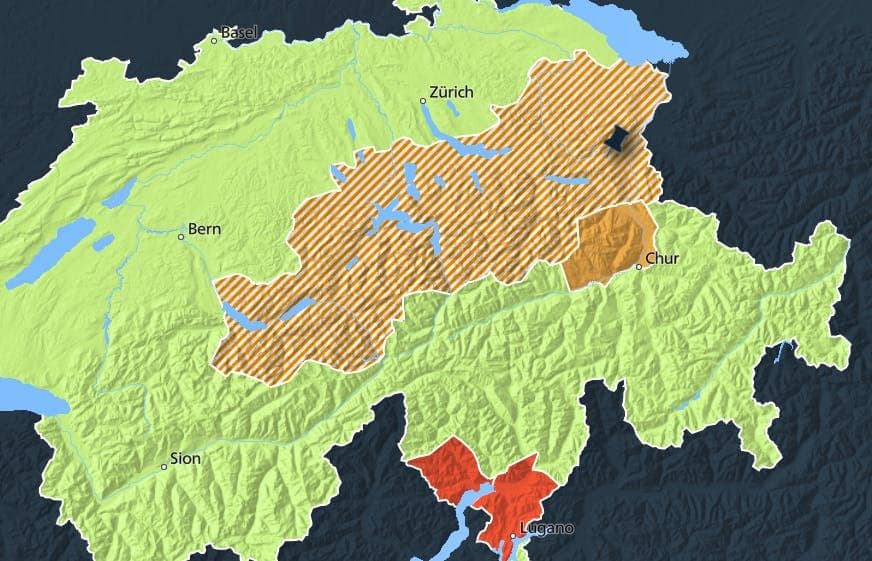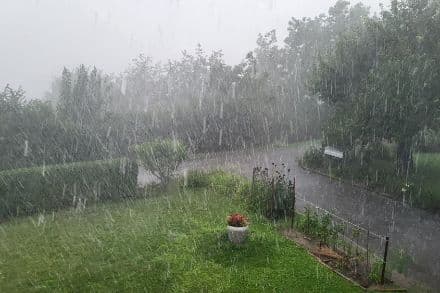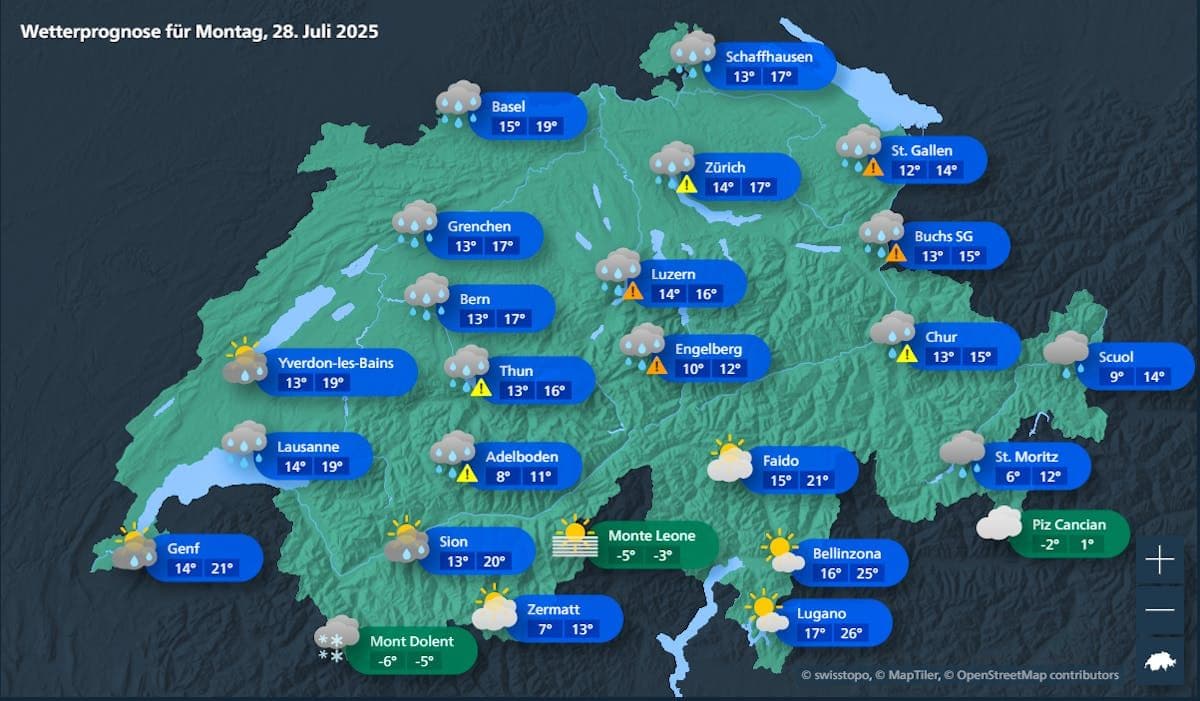Alpine Fury Unleashed: Navigating Switzerland's Extreme Weather Resilience
Switzerland's idyllic facade hides a new reality: extreme weather. Explore recent deluges, floods, and hailstorms, and how the nation adapts to its volatile climate.

Beyond the Idyllic Alps: A Summer of Unprecedented Deluge
, often pictured as a pristine canvas of serene alpine landscapes and meticulous order, has recently found itself grappling with an increasingly volatile reality: a summer of relentless, extreme weather. This past July, the nation experienced an unprecedented deluge that painted weather radar maps in a kaleidoscope of warning colors, stretching a formidable storm front from all the way to . Virtually the entire country, save for the and parts of , found itself under the relentless assault of heavy precipitation. Forecasts offered little reprieve, predicting continued massive rainfall, particularly from the southwest, with dry skies not expected until late morning. This wasn't just a brief shower; we're talking about widespread, intense downpours capable of triggering landslides on steep slopes, sudden flash floods in normally docile streams, and extensive urban inundation. Regions like the , , and were hit hard, with some areas under a Level 3 danger warning, signaling a significant threat. The sheer volume of water, with some areas expecting 40-80mm of rain, quickly overwhelmed drainage systems, even leading to water cascading through major shopping centers and train stations.

The Anatomy of Chaos: Inside Switzerland's Recent Storm Fury
The recent storm fury wasn't a singular event but a series of dynamic, fast-moving systems that showcased nature's raw power. Beyond the widespread rainfall, these weather cells brought a terrifying cocktail of hazards. We saw dramatic cloud formations sweep across the country, visually stunning yet undeniably ominous, often accompanied by strong gusts reaching up to 80 km/h, hail, and torrential rain. On one particularly chaotic Monday afternoon, a storm line carved its way across central , delivering localized but intense impacts. The warnings rapidly expanded eastward, engulfing regions like , , , , and in 's . Daily life was significantly disrupted; 's main train station saw its platforms and stairwells transformed into temporary waterfalls, while the visitor terrace at had to be evacuated for safety. Even major retail hubs like the in and in experienced internal flooding, with water dripping from ceilings into lower floors. highlighted the severity, noting that between 80 and 130 millimeters of rain were expected in the northern within days – an amount exceeding half of the average rainfall for an entire July.

Coping with Nature's Power: Expert Warnings and Community Resilience
In the face of such overwhelming natural forces, both expert warnings and community resilience became paramount. As storms unloaded, often in two distinct blocks hitting western / and central //, citizens and authorities sprang into action. We heard stories of individuals making quick, smart decisions, like a woman who wisely turned her car around upon seeing a flooded underpass, allowing the fire department to swiftly secure the area. The sheer intensity was palpable; a News-Scout in reported an astonishing 10 liters of water per square meter falling in just five minutes from their balcony gauge. and the issued urgent, repeated advisories, strongly recommending that people avoid riverbanks, lake shores, and steep slopes due to the risk of rising water levels and landslides. Particular caution was urged near mountain streams, which can turn into raging torrents in moments. For parts of , the federal government even escalated warnings to Level 4, indicating a "great danger" from falling branches, toppled trees, lightning strikes, hail, and flash floods. This meant strict advice to avoid exposed areas like mountain ridges, peaks, trees, masts, and open fields, underscoring the immediate and tangible threats posed by these unpredictable storms.

Facing the Future: Switzerland's Long-Term Battle Against Extreme Weather
These recent events underscore a critical, evolving challenge for : the long-term battle against increasingly extreme weather patterns. What was once seen as an occasional disruption now appears to be a more frequent and intense reality. The widespread impact, from to , signifies that no region is immune, demanding a comprehensive and adaptable approach. As forecasts continue to predict massive precipitation and the risk of flash floods and landslides remains ever-present, is compelled to re-evaluate and reinforce its strategic resilience. This isn't just about immediate emergency response; it's about a deeper societal adaptation. We're seeing a heightened awareness of the potential for rising water levels in even normally dry ditches, prompting continuous warnings to stay clear of all water bodies. The recurring nature of these Level 3 and Level 4 danger warnings, especially for regions like , , , and parts of , highlights an ongoing need for robust infrastructure, advanced early warning systems, and persistent public education. 's renowned meticulousness will surely be tested, but its commitment to preparedness and long-term planning will be key in navigating this increasingly unpredictable climate future.
Related Articles

Switzerland's Wet Awakening: Unpacking a Weekend of Torrential Alpine Fury

Switzerland's Wet Awakening: Unpacking a Weekend of Torrential Alpine Fury

Alpine Anomalies: How Summer Storms Are Rewriting Switzerland's Weather Story

Alpine Anomalies: How Summer Storms Are Rewriting Switzerland's Weather Story

Alpine Anomaly: Switzerland's Unexpected Return to Winter Amidst Summer

Alpine Anomaly: Switzerland's Unexpected Return to Winter Amidst Summer

The Coming Deluge: Germany's Highest Storm Alert and the Battle for Resilience
